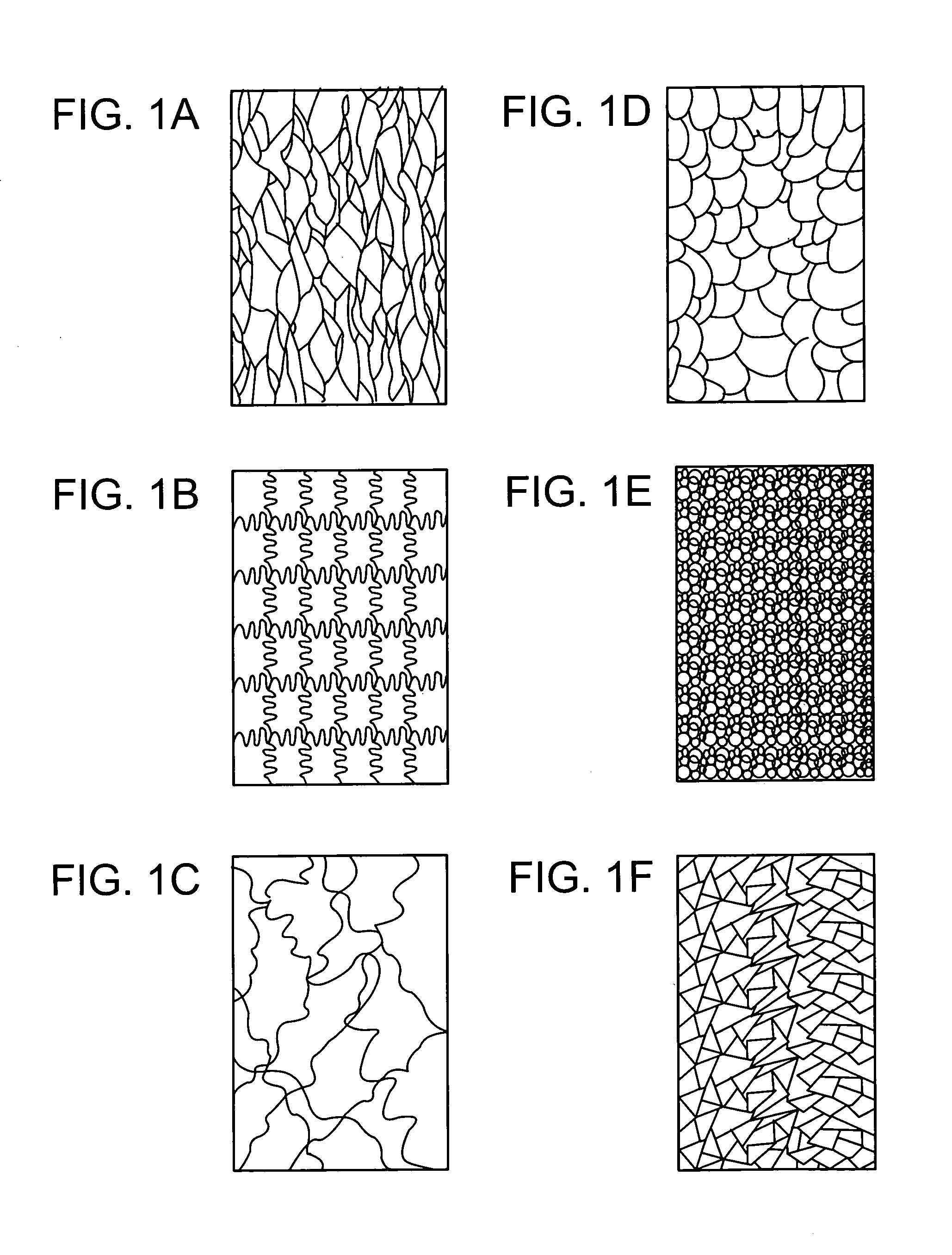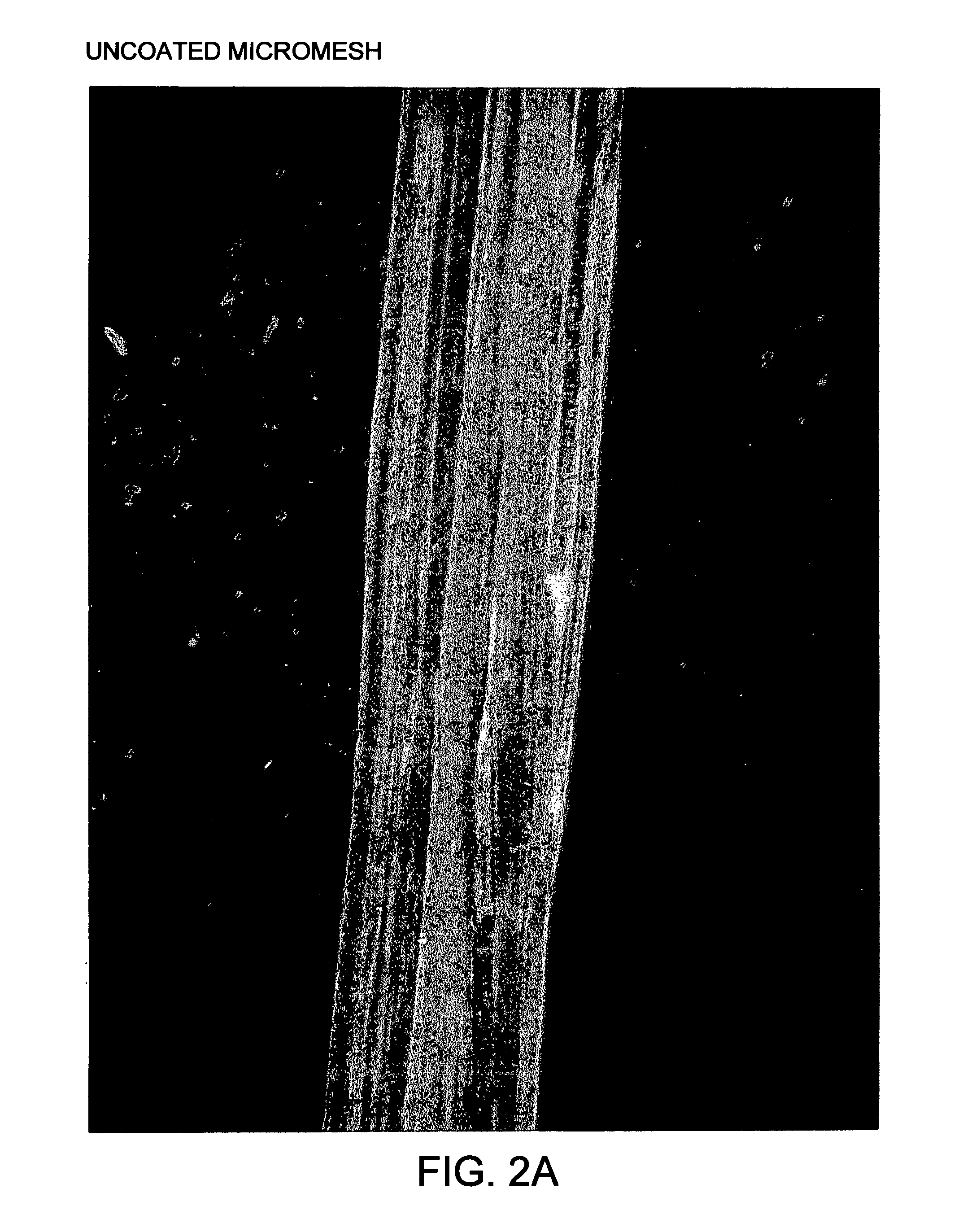Micromesh interproximal devices
a technology of interproximal devices and micromesh, which is applied in the direction of biocide, impression caps, applications, etc., can solve the problems of reducing the efficiency of flossing, reducing the effectiveness of flossing, so as to avoid physical damage to the tape
- Summary
- Abstract
- Description
- Claims
- Application Information
AI Technical Summary
Benefits of technology
Problems solved by technology
Method used
Image
Examples
example 39
[0213]A spool of micromesh tape, 460 denier, 1.7 thousandths inch thickness, constructed of ultra high molecular weight polyethylene, with a relative fibrillation of 42, was put on a dispensing creel under a controlled tension of 150 grams. The tape was routed into an applicator tank under four splaying bars.
[0214]The coating formula consists of 57.1 percent ULTRAMULSION® 10 / 2.5 (90 percent poloxamer 407 and 10 percent polydimethylsiloxane, 2.5 million centistokes); 7 percent microcrystalline wax 445; 3.0 percent PEG 40 sorbitan diisostearate; 15 percent stearyl alcohol; 1.8 percent insoluble saccharin; 0.1 percent propyl gallate; 10 percent flavor; and 6.0 percent dicalcium phosphate dihydrate.
[0215]The ingredients were heated at 85° C. and stirred vigorously until homogeneous and added to the applicator tank until the four bars were covered.
[0216]The micromesh tape was threaded under four splaying bars and up through a slub gap of 0.005 inches and between two compression rollers h...
example 40
[0218]A spool of micromesh tape, 460 denier, 1.7 thousandths inch thickness, constructed of ultra high molecular weight polyethylene, with a relative fibrillation of 70, was put on a dispensing creel under a controlled tension of 150 grams. The tape was routed into an applicator tank under four splaying bars.
[0219]The coating formula consists of 57.1 percent ULTRAMULSION® 10 / 2.5 (90 percent poloxamer 407 and 10 percent polydimethylsiloxane, 2.5 million centistokes); 7 percent microcrystalline wax 445; 3.0 percent PEG 40 sorbitan diisostearate; 15 percent stearyl alcohol; 1.8 percent insoluble saccharin; 0.1 percent propyl gallate; 10 percent flavor; and 6.0 percent dicalcium phosphate dihydrate.
[0220]The ingredients were heated at 85° C. and stirred vigorously until homogeneous and added to the applicator tank until the four bars were covered.
[0221]The micromesh tape was threaded under four splaying bars and up through a slub gap of 0.005 inches and between two compression rollers g...
example 41
[0223]A spool of micromesh tape, 460 denier, 1.7 thousandths inch thickness, constructed of ultra high molecular weight polyethylene, with a relative fibrillation of 200, was put on a dispensing creel under a controlled tension of 150 grams. The tape was routed into an applicator tank under four splaying bars.
[0224]The coating formula consists of 57.1 percent ULTRAMULSION® 10 / 2.5 (90 percent poloxamer 407 and 10 percent polydimethylsiloxane, 2.5 million centistokes); 7 percent microcrystalline wax 445; 3.0 percent PEG 40 sorbitan diisostearate; 15 percent stearyl alcohol; 1.8 percent insoluble saccharin; 0.1 percent propyl gallate; 10 percent flavor; and 6.0 percent dicalcium phosphate dihydrate.
[0225]The ingredients were heated at 85° C. and stirred vigorously until homogeneous and added to the applicator tank until the four bars were covered.
[0226]The micromesh tape was threaded under four splaying bars and up through a slub gap of 0.005 inches and between two compression rollers ...
PUM
| Property | Measurement | Unit |
|---|---|---|
| Linear density | aaaaa | aaaaa |
| Linear density | aaaaa | aaaaa |
| Linear density | aaaaa | aaaaa |
Abstract
Description
Claims
Application Information
 Login to View More
Login to View More - R&D
- Intellectual Property
- Life Sciences
- Materials
- Tech Scout
- Unparalleled Data Quality
- Higher Quality Content
- 60% Fewer Hallucinations
Browse by: Latest US Patents, China's latest patents, Technical Efficacy Thesaurus, Application Domain, Technology Topic, Popular Technical Reports.
© 2025 PatSnap. All rights reserved.Legal|Privacy policy|Modern Slavery Act Transparency Statement|Sitemap|About US| Contact US: help@patsnap.com



